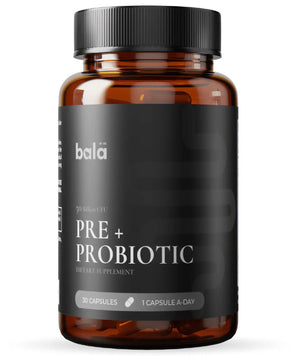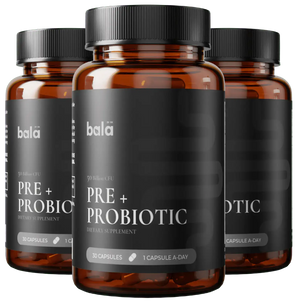Table of Contents
Introduction
Did you know that breakfast can be a crucial determining factor in your weight loss journey? While many of us kick off our day with a bowl of cereal, the question remains: is that bowl of Cream of Wheat actually helping or hindering our weight loss goals? This seemingly innocent breakfast choice has been a staple in many households across America for generations, yet it often gets lost in the shuffle of modern dietary trends.
As we delve deeper into the world of nutrition, particularly gut health, we often find ourselves dissecting the components of what we eat. Understanding how certain foods affect our body—especially our gut—can empower us to make better choices. Cream of Wheat, made from farina (milled wheat), is praised for its smooth texture and nutritional benefits, but how does it stack up when it comes to weight loss?
In this blog post, we will explore the nutritional profile of Cream of Wheat, its potential impact on weight loss, and how it can fit into a balanced diet. We will also discuss the importance of gut health and how it relates to our overall wellness. So, if you’ve ever found yourself wondering about the role of Cream of Wheat in your weight management efforts, you’re in the right place.
By the end of this article, we aim to equip you with knowledge about Cream of Wheat, how it compares to other breakfast options, and which dietary choices can support your weight loss journey. At Bala Health, we believe in making informed decisions backed by science, and we’re here to guide you on your path to better gut health.
Let’s dive into the details!
Understanding Cream of Wheat
What is Cream of Wheat?
Cream of Wheat is a brand of hot cereal made primarily from farina, a finely ground wheat product. It was first introduced in the United States in the late 19th century and has become a popular breakfast option due to its mild flavor and creamy texture. While it is often prepared with water or milk, it can also be customized with various toppings, making it a versatile breakfast choice.
Nutritional Profile
One serving of cooked Cream of Wheat typically contains the following nutrients:
- Calories: Approximately 133
- Protein: 4 grams
- Fat: 0.5 grams
- Carbohydrates: 28 grams
- Fiber: 1 gram
- Iron: 58% of the Daily Value (DV)
- Niacin: 39% of the DV
- Vitamin B6: 38% of the DV
- Thiamine: 37% of the DV
- Riboflavin: 33% of the DV
- Folate: 33% of the DV
- Selenium: 13% of the DV
- Calcium: 11% of the DV
- Copper: 11% of the DV
As we can see, Cream of Wheat is a rich source of several B vitamins and iron, making it a nutritious choice for many. Iron, in particular, is essential for oxygen transport in the body and is especially beneficial for vegetarians and vegans who may struggle to meet their iron needs.
The Good and the Bad
While Cream of Wheat offers numerous health benefits, it’s essential to consider some drawbacks:
- Gluten Content: Being a wheat-based product, Cream of Wheat contains gluten. For individuals with celiac disease or gluten sensitivity, consuming this product can lead to adverse effects.
- Sodium Levels: Depending on the preparation method, Cream of Wheat can be relatively high in sodium, particularly in instant varieties. Excess sodium intake can lead to health issues such as hypertension.
- Low Fiber: Compared to whole grain options like oats, Cream of Wheat is lower in fiber, which is an essential nutrient for promoting satiety and supporting digestive health.
Understanding these factors can help us make informed dietary choices that align with our health goals.
Cream of Wheat and Weight Loss: What the Research Says
Caloric Contribution
When considering weight loss, the number of calories consumed versus calories burned is a crucial factor. Cream of Wheat can be a low-calorie breakfast option, especially when compared to sugary cereals or pastries. However, it’s essential to be mindful of portion sizes and toppings, as these can significantly alter the calorie content of your meal.
Satiety and Nutrient Density
One of the key components of successful weight loss is the ability to feel full and satisfied after a meal. Foods high in fiber and protein tend to promote feelings of fullness, reducing the likelihood of overeating later in the day. Unfortunately, Cream of Wheat's low fiber content means it may not keep you full for as long as higher-fiber options like oatmeal or whole grain cereals.
Glycemic Index
Cream of Wheat has a moderate glycemic index, which means it can cause a rapid increase in blood sugar levels. This spike is often followed by a crash, leading to feelings of hunger shortly afterward. For weight management, it’s generally recommended to choose foods with a lower glycemic index, as they can help maintain stable blood sugar levels.
Comparison with Other Breakfast Options
When we stack Cream of Wheat against other breakfast options, particularly whole grains like oatmeal, the differences become evident. Oatmeal is higher in fiber and has been associated with various health benefits, including improved satiety and blood sugar control. In fact, research indicates that a diet rich in whole grains can positively influence weight loss efforts.
If you’re considering breakfast choices that can support your weight loss goals, you might also explore alternatives like steel-cut oats, quinoa, or chia seed pudding, all of which offer higher fiber content and better satiety potential.
Supporting Your Gut Health
The Role of Gut Health in Weight Management
At Bala Health, we recognize the crucial link between gut health and overall wellness. Our gut microbiome plays a significant role in digestion, nutrient absorption, and even weight regulation. Maintaining a healthy balance of gut bacteria can support metabolic processes that are vital for weight management.
Probiotics and Gut Health
Integrating probiotics into your diet can help support a healthy gut microbiome. Probiotics are beneficial bacteria that promote digestive health and can aid in nutrient absorption. We believe in the power of clean, science-backed probiotics, which is why we offer our clinically validated Bala Health Probiotic. This product is designed to support your gut health and overall well-being.
Ready to take the next step in your journey to better gut health? Start your journey to better gut health with our clinically-backed probiotic!
Balancing Your Diet
Incorporating a variety of whole foods into your diet can help nourish your gut and support weight loss. Focus on:
- Whole Grains: Opt for whole grains like brown rice, quinoa, and oats.
- Fruits and Vegetables: Aim to fill half your plate with colorful fruits and vegetables.
- Lean Proteins: Include sources of lean protein, such as legumes, chicken, fish, and tofu.
- Healthy Fats: Incorporate healthy fats from sources like avocados, nuts, and olive oil.
By adopting a balanced approach to eating, you can create an environment that supports a healthy gut and promotes weight loss.
Practical Tips for Incorporating Cream of Wheat
If you enjoy Cream of Wheat and want to make it work within your weight loss plan, consider the following tips:
- Portion Control: Keep an eye on portion sizes to avoid consuming excess calories.
- Add Fiber: Boost the fiber content by adding toppings like berries, nuts, or seeds. These additions can enhance the nutritional profile of your meal and help you feel more satisfied.
- Try Alternatives: If you’re looking for a more filling option, consider mixing in some oats or substituting Cream of Wheat with whole grain alternatives.
- Mindful Eating: Pay attention to your hunger cues and eat mindfully to ensure you’re not consuming calories out of habit or boredom.
- Stay Hydrated: Drinking water throughout the day can help control hunger and support overall health.
If you’re curious about how your current habits align with your weight management goals, take our 3-minute Weight-Loss Quiz to find your personalized gut-health roadmap.
Conclusion
So, is Cream of Wheat healthy for weight loss? The answer isn't black and white. While it can be a nutritious addition to a balanced breakfast, its low fiber content and moderate glycemic index may not make it the best choice for everyone looking to manage their weight effectively.
Ultimately, the key is to approach your diet with a focus on variety and balance. Emphasizing whole grains, fruits, vegetables, and lean proteins while incorporating probiotics can create a solid foundation for both gut health and weight management.
At Bala Health, we are committed to helping you feel better from the inside out. Remember, each individual’s dietary needs and preferences are unique, and we encourage you to explore what works best for you. If you’re ready to take action, feel better from the inside out—subscribe and save on our clinically-backed probiotic today.
FAQ
1. Is Cream of Wheat gluten-free?
No, Cream of Wheat contains gluten, which is a protein found in wheat. Those with celiac disease or gluten sensitivity should avoid it.
2. How can I make Cream of Wheat more filling?
You can add high-fiber toppings such as fruits, nuts, or seeds to increase satiety.
3. Can Cream of Wheat help with digestion?
While it provides some nutrients, its low fiber content may not be the best choice for promoting good digestion. Whole grains typically offer more fiber and benefits for gut health.
4. What are some alternatives to Cream of Wheat for breakfast?
Consider options like oatmeal, quinoa, or chia seed pudding, which tend to be higher in fiber and more beneficial for weight loss.
5. How can probiotics help with weight management?
Probiotics can support a healthy gut microbiome, which plays a role in digestion, nutrient absorption, and metabolism—factors that can influence weight management.
Remember, taking an informed approach to your diet can help you achieve your health goals effectively. We’re here to support your journey every step of the way!






